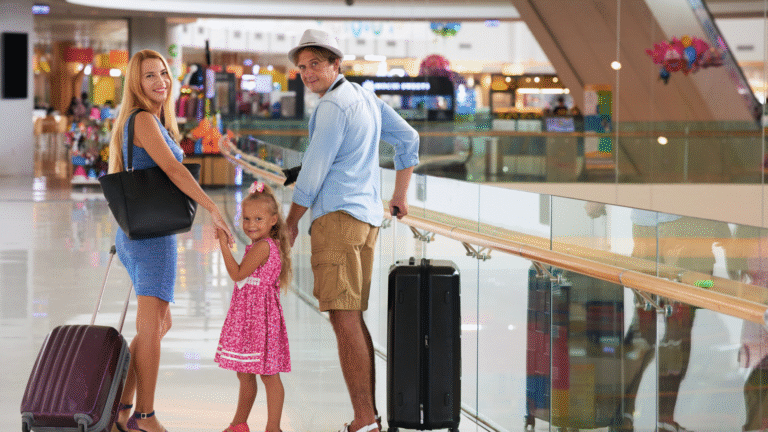Travel photography captures moments and emotions that are unique to each journey. By applying a few simple editing tips, one can enhance travel photos, making them vibrant and engaging. Whether it’s adjusting brightness, enhancing colors, or cropping for better composition, the right edits can transform an ordinary shot into a stunning piece of art.
Many travelers are unaware of the potential their images hold until they’re processed correctly. Using editing software or mobile apps, they can bring out the beauty of landscapes, architecture, and local culture in ways that truly reflect their experiences. Attention to detail in editing can significantly elevate one’s travel photography, allowing these visual stories to resonate more with viewers.
With the right techniques, even the most modest travel photos can pop with life and interest. Simple adjustments like contrast and saturation can highlight the essence of a place, creating an inviting allure. Exploring these editing tips will not only enhance one’s photographs but also enrich the storytelling element behind each image.
Essential Editing Techniques for Travel Photos
To enhance travel photos, a blend of basic adjustments and advanced techniques is essential. Focusing on exposure, contrast, and colors not only improves technical quality but also helps convey the beauty of the moment captured.
Basic Adjustments: Exposure, Contrast, and White Balance
Exposure adjustments are crucial for achieving the right brightness in travel photos. Increasing or decreasing exposure can bring out details often lost in shadows or highlights. Contrast adds depth, making elements stand out. A higher contrast level can highlight mountainous terrains or vibrant cityscapes.
White balance corrects color temperature, ensuring that whites appear true without unwanted color casts. Adjusting this can help depict scenes accurately under different lighting conditions, such as the warm glow of sunset or the cool tones of shade.
Sharpening and Noise Reduction for Clarity
Sharpening enhances the details in an image, making it crisper. Applying sharpening carefully can help bring focus to landmarks or intricate patterns in local culture.
Noise reduction is vital, especially in low-light situations where grain can detract from a photo’s quality. Utilizing software tools effectively minimizes unwanted noise while preserving important details. It is important to find a balance. Over-sharpening can lead to unnatural images, while excessive noise reduction may make photos appear too smooth and lifeless.
Color Correction and Vibrancy Enhancement
Color correction adjusts any color discrepancies, ensuring the image reflects reality. This involves tweaking specific colors to enhance their richness and make landscapes more inviting.
Vibrancy enhancement focuses on increasing the intensity of colors selectively. This technique avoids oversaturating the entire image, allowing skin tones to remain natural while brightening backgrounds. Active adjustment of these elements brings travel experiences to life, making them more engaging for viewers.
Tips for Cropping and Leveling Horizons
Cropping allows one to refocus the viewer’s attention. It can eliminate distractions from the edges of a photo and create a more dynamic composition. Leveling horizons is essential for maintaining visual balance. An uneven horizon can distract from the overall impact of the photo. For precision, grid overlays can help align landscapes or urban settings straight. Correct cropping and leveling can dramatically improve the aesthetic appeal of travel photographs.
Creative Techniques to Make Your Travel Photos Pop
Effective editing can significantly enhance the visual impact of travel photos. Using various techniques such as employing filters, creating depth, and capturing natural light can transform ordinary images into stunning visuals that attract attention.
Using Filters, Presets, and Instagram-Ready Styles
Filters and presets can drastically alter the mood of a travel photo. Many photo editing software and apps, including Instagram, offer a range of options tailored to enhance specific scenes. When choosing a filter, consider the emotions you want to convey. For instance, a warm filter can evoke feelings of nostalgia, while a cooler tone may lend a more modern aesthetic.
Using consistent presets across a series of photos can also help create a cohesive look, perfect for social media feeds. Experimenting with combinations can lead to unique edits that stand out.
Enhancing Depth, Focus, and Leading Lines
Depth adds dimension and intrigue to photographs. Techniques like adjusting the aperture can help achieve a blurred background while keeping the subject in sharp focus. This draws the viewer’s eye toward the main element of the scene.
Incorporating leading lines is also critical. These can be natural elements like roads or architectural features that guide the viewer’s gaze through the image. Positioning the subject at the end of these lines can enhance visual interest and engagement.
Adjusting contrast and clarity can further emphasize these elements, making the photo more dynamic and eye-catching.
Highlighting Natural Light and Golden Hour
Natural light plays a pivotal role in the quality of travel photographs. Taking shots during the golden hour—shortly after sunrise or before sunset—provides soft, diffused lighting that enhances colors. Incorporating natural light into editing can improve the warmth and vibrancy of a photo. Increasing exposure slightly or adjusting shadows can draw attention to the subject without losing detail in the highlights.
Using light creatively can also add drama. Backlighting subjects or capturing sunrays can create stunning silhouettes that elevate the artistic quality of travel images.
Advanced Editing Tools and Software for Travel Photography
Effective travel photography editing requires powerful tools and techniques. The right software can enhance images significantly, while understanding specific editing methods can elevate the overall quality.
Choosing the Right Editing Software: Lightroom, Photoshop, and Beyond
When selecting editing software, Adobe Lightroom and Photoshop remain industry standards. Lightroom is excellent for organizing and batch processing, ideal for managing large collections of travel photos. The non-destructive editing feature preserves original files, making it easier to experiment with adjustments.
Photoshop, on the other hand, offers intricate manipulation capabilities. It is perfect for retouching, adding elements, or creating layered compositions. Other alternatives like Capture One are praised for their color grading and tethering capabilities, while Luminar is user-friendly and includes AI-based editing tools. Snapseed and VSCO are excellent mobile options for quick edits on the go. Each software serves specific needs, and the choice depends on the photographer’s workflow.
Working with RAW Files and Digital Blending
RAW files provide the best flexibility for editing since they retain more image data than JPEGs. This format allows for significant adjustments in exposure, white balance, and contrast without compromising quality. Photographers should familiarize themselves with RAW processing in software like Lightroom or Capture One.
Digital blending is a technique used to combine various exposures for a balanced image. This method is beneficial for high dynamic range scenes, such as landscapes. It allows photographers to capture details in both shadows and highlights effectively. Tools like Photoshop facilitate this process using layers and masks, ensuring a seamless final product.
Selective Adjustments and Image Healing
Selective adjustments enable photographers to enhance specific areas of an image. Using tools such as brush adjustments in Lightroom or gradient filters can bring life to certain portions without affecting the whole photograph. This targeted approach helps to highlight key subjects while maintaining the background’s integrity.
Image healing tools, like those in Photoshop, are essential for removing distractions from travel photos. The clone stamp and healing brush can eliminate unwanted objects or imperfections, ensuring the focus remains on the scene’s beauty. Mastering these tools adds professionalism to travel photography, creating images that truly resonate with viewers.
Refining Composition and Style in Travel Photography
Effective composition and style are crucial in travel photography. They enhance the visual appeal of images, making them more engaging for viewers. Techniques such as the rule of thirds, framing, and stability play significant roles in achieving captivating photographs.
Applying the Rule of Thirds, Framing, and Stability
The rule of thirds divides the frame into a 3×3 grid, guiding the placement of subjects. Key elements positioned along these lines or at their intersections create balance and visual interest. For instance, placing horizons in the upper or lower third can make landscapes feel more dynamic.
Framing involves using elements within the scene to create a natural “frame” around the subject. This could be tree branches, doorways, or arches that draw the viewer’s eye to the focal point. Stability is vital in ensuring clarity, especially in low-light conditions. Using a tripod minimizes camera shake, crucial for capturing sharp images, particularly with longer exposures or low ISO settings.
Portrait and Landscape Editing Tips
Editing travel portraits involves enhancing not only the subject but also their environment. Brightening skin tones and adjusting contrast can make subjects stand out effectively against backgrounds. Utilizing selective adjustments helps focus attention on key features.
For landscapes, ensuring depth is essential. This can involve sharpening the foreground and slightly blurring the background for depth. Employing a modest aperture can produce a pleasing bokeh effect, enhancing the image’s three-dimensional feel. Combining a focus on the subject with an engaging background elevates the overall impact of travel photos, making them memorable.
Color Grading, Blemish Correction, and Vignetting
Color grading enhances the mood of photos. Adjusting saturation can bring out vibrant colors typical of travel experiences. Cool hues can evoke calmness, while warm tones may elicit excitement or adventure.
Blemish correction is crucial for both portraits and landscapes. Removing spots or distractions ensures that viewers focus on the main subject or scenery. Tools in photo editing software allow for precise removal without affecting the surrounding area.
Vignetting subtly darkens the corners of an image, drawing attention to the center. This technique can be particularly effective for portraits, as it emphasizes the subject against a softer background, enriching the overall aesthetic.


